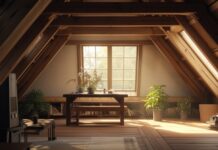Imagine walking into a room that used to feel a bit closed off—kind of dark, maybe a little stuffy. Then someone slides open the roof, and suddenly there’s sunlight streaming in, fresh air moving through, and even a view of the sky above. The whole space feels different—brighter, bigger, and more alive. That’s the power of a sliding glass roof hatch.
It might not sound like much at first. But in buildings where every inch counts, these clever ceiling features are doing way more than people realize. They’re not just windows in the roof—they’re access points, design boosts, and safety tools all rolled into one.
More Than Just a Pretty View
Sliding glass roof hatches aren’t only there to look cool. Sure, they bring in daylight and give a clear view of the sky, but their purpose goes way beyond that. These hatches are often used in commercial buildings, schools, and even apartments to help with natural airflow, easy roof access, and better energy use.
One great thing about these hatches is that they slide open, which means they don’t take up extra space when used. Instead of swinging out or popping up awkwardly, they move smoothly along tracks. That makes them a perfect choice in places where design matters and space is tight.
In fact, a great option for anyone looking to combine modern design with roof access is using sliding glass roof hatches. These aren’t just good-looking—they’re also built to handle weather, security, and safety requirements in big commercial spaces.
Why Brightness Changes Everything
Light changes how a room feels. When a room is dark, it can feel smaller and even a bit gloomy. But once sunlight comes in through a roof hatch, the whole vibe shifts. Spaces with glass roof panels tend to feel more open, relaxed, and clean—even if the rest of the room hasn’t changed.
Natural light also helps save energy. During the day, it cuts down the need for overhead lighting. That means buildings with these hatches use less power and feel more eco-friendly. It’s one of those quiet upgrades that doesn’t show off, but still makes a big difference.
Some places even use these hatches to follow building rules that require “daylighting”—that’s when sunlight is used as the main light source during the day. Instead of extra lights and wires, it’s just sunlight doing the job through smart design.
A Clever Way to Get to the Roof
Sliding roof hatches also help with something that most people don’t think about: getting to the top of the building. Roofs need to be checked, cleaned, or used for maintenance all the time. Ladders and basic doors aren’t always the safest or smartest way to get up there.
That’s where these hatches come in. Instead of making someone squeeze through a tight space or climb up the side of a building, they can just open the hatch and go straight up. Some buildings even have stairs or lift systems that go right to the hatch, so it’s a simple step up.
This helps maintenance teams, emergency crews, and anyone else who needs access. It’s a lot safer than old-school setups and way more comfortable to use. Plus, it can be locked and controlled, so not just anyone can get through.
Keeping the Rain—and Trouble—Out
Even though these hatches open, they still have to protect the building. That means being able to close tight and seal out rain, wind, and even snow. The good ones are built to handle all of that. They have strong frames, double-sealed glass, and locking systems that make sure they stay put when shut.
Because they’re made from strong materials (usually aluminum or steel), they last a long time without rusting or falling apart. The glass is also super durable, often using safety glazing to prevent breakage. That way, buildings stay safe and dry no matter what the weather’s doing outside.
There’s also a bonus in security. Since roof entries can be weak points in a building, having a high-quality sliding hatch helps stop break-ins and keeps things protected. The glass might look open and light, but it’s built to be strong.
Designed to Blend In or Stand Out
One of the best parts? These hatches don’t mess up the look of a building. In fact, most architects use them to make the design better, not worse. Some are almost invisible from inside the room—they sit flat and match the ceiling. Others are made to stand out, turning the hatch into a feature with bold framing and visible tracks.
There are even ways to tint the glass so it doesn’t let in too much sun or heat. Some have motorized controls so they can open or close with a button. Others stay manual but still feel smooth and easy to use. It really depends on what the space needs.
From inside the building, they can feel like a skylight that also works as a door. From the outside, they’re clean and modern, matching the building’s style without sticking out too much.
Where You’ll See Them Most
These aren’t just for fancy apartments or luxury homes. You’ll spot sliding glass roof hatches in all kinds of places:
- Office buildings where they help with lighting and roof access
- Schools and universities where safety and airflow matter
- Apartment buildings with rooftop spaces
- Gyms, pools, and event centers that want light without losing structure
- Museums and galleries where design and function both count
In each of these places, the hatch does something different—adds brightness, keeps people safe, gives better airflow, or just helps the space work smarter.
The Takeaway
Sliding glass roof hatches aren’t just cool features—they actually solve real problems. They make rooms feel better with natural light. They give people a safe way to get to the roof. They help buildings save energy, stay secure, and look clean and modern all at once.
They might be up high, but they do way more than just sit there. That’s what makes them one of those quiet upgrades that people don’t always notice—but definitely feel.
So next time a room feels dark or cramped, or when rooftop access looks like a headache, it might just need a little help from above.
Image source freepik






